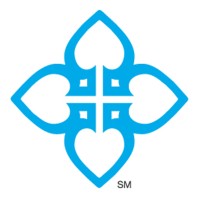
Lake Charles Memorial Health System Company Cyber Security Posture
lcmh.comLake Charles Memorial Health System is southwest Louisiana's largest not-for-profit, community healthcare system. Memorial Health System is locally owned and operated by a Board of Trustees from the community it serves. With personalized care for every stage of life, Lake Charles Memorial Health System makes receiving excellent healthcare close to home a reality. Nestled on I-10, two hours from Houston and three hours from New Orleans, Lake Charles Memorial opened its doors in 1952 as a small 100-bed facility. Today, one hospital has grown into a full-service, comprehensive health system spanning a five-parish area across southwest Louisiana. With a 417-bed capacity over three campuses, a 40-bed Level III Trauma Center, and over 300 physician specialists on its medical staff, Lake Charles Memorial responds to the most immediate and primary medical needs of all people in southwest Louisiana. As a cornerstone of the community, Memorial is the second largest employer in the region, offering a place on our team for over 2,500 employees to provide for their families and reach their career goals. Recognized as a 2023 Great Community Hospital by Becker’s Healthcare and by Care Chex as a 2022 Top 10% in the Nation for Heart Attack Treatment, Memorial’s commitment to quality and investment in the latest medical technology, are a few reasons patients and employees choose Memorial as their healthcare home.
LCMHS Company Details
lakecharlesmemorial
1176 employees
5336.0
62
Hospitals and Health Care
lcmh.com
Scan still pending
LAK_1476006
In-progress
Between 800 and 900
This score is AI-generated and less favored by cyber insurers, who prefer the TPRM score.
 LCMHS Global Score
LCMHS Global Score.png)

Lake Charles Memorial Health System Company Scoring based on AI Models
| Model Name | Date | Description | Current Score Difference | Score |
|---|---|---|---|---|
| AVERAGE-Industry | 03-12-2025 | This score represents the average cybersecurity rating of companies already scanned within the same industry. It provides a benchmark to compare an individual company's security posture against its industry peers. | N/A | Between 800 and 900 |
Lake Charles Memorial Health System Company Cyber Security News & History
| Entity | Type | Severity | Impact | Seen | Url ID | Details | View |
|---|---|---|---|---|---|---|---|
| Lake Charles Memorial Health System | Breach | 100 | 4 | 10/2022 | LAK22827123 | Link | |
Rankiteo Explanation : Attack with significant impact with customers data leaksDescription: Louisiana-based Lake Charles Memorial Health System (LCMHS) experienced a data breach incident. The breach impacted 269,752 individuals. The breach occurred between October 20 and 21. An unauthorized party had gained access to its network. The unauthorized third party had accessed and potentially obtained certain files containing patient names, addresses, identification numbers, health insurance information, payment information, dates of birth, and clinical information. Some Social Security numbers were also impacted. | |||||||
| Lake Charles Memorial Health System | Ransomware | 100 | 5 | 11/2022 | LAK035251122 | Link | |
Rankiteo Explanation : Attack threatening the organization's existenceDescription: Hive hacked the Lake Charles Memorial Health System (LCMH)’s network for 12 days. It had exfiltrated 270 GB of files including patient and employee data. A sample of files was attached to the email as proof of claims. Hive demanded $900,000 to delete all files and provide them with information on their vulnerabilities. The leak included protected health information on patients, such as a folder with 5,834 files for patients using the mammography service in 2022. Other folders contained internal documents, such as files relating to a previous HIPAA breach inquiry, and yet other folders and files contain personnel information on employees. It also contained files on personnel information and a folder with 664 files on individual employees with their personal and personnel information. | |||||||
Lake Charles Memorial Health System Company Subsidiaries

Lake Charles Memorial Health System is southwest Louisiana's largest not-for-profit, community healthcare system. Memorial Health System is locally owned and operated by a Board of Trustees from the community it serves. With personalized care for every stage of life, Lake Charles Memorial Health System makes receiving excellent healthcare close to home a reality. Nestled on I-10, two hours from Houston and three hours from New Orleans, Lake Charles Memorial opened its doors in 1952 as a small 100-bed facility. Today, one hospital has grown into a full-service, comprehensive health system spanning a five-parish area across southwest Louisiana. With a 417-bed capacity over three campuses, a 40-bed Level III Trauma Center, and over 300 physician specialists on its medical staff, Lake Charles Memorial responds to the most immediate and primary medical needs of all people in southwest Louisiana. As a cornerstone of the community, Memorial is the second largest employer in the region, offering a place on our team for over 2,500 employees to provide for their families and reach their career goals. Recognized as a 2023 Great Community Hospital by Becker’s Healthcare and by Care Chex as a 2022 Top 10% in the Nation for Heart Attack Treatment, Memorial’s commitment to quality and investment in the latest medical technology, are a few reasons patients and employees choose Memorial as their healthcare home.
Access Data Using Our API

Get company history
.png)
LCMHS Cyber Security News
Lake Charles Memorial Health has possible cybersecurity incident
Lake Charles Memorial Health learned on Oct. 25 that an unauthorized third party was able to access to its network, according to the release.
Hackers accessed data on 270,000 patients from Louisiana hospital system in attempted ransomware attack
Hackers accessed the personal data of nearly 270,000 patients in an attempted ransomware attack on a Louisiana health care system in October ...
Cybersecurity hack targets software used by St. Charles Parish Public Schools
PowerSchool told the school system that any breach data is now secure, according to a statement from St. Charles Parish Public Schools. The ...
Lake Charles Memorial Health has possible cybersecurity incident
Lake Charles Memorial Health learned on Oct. 25 that an unauthorized third party was able to access to its network, according to the release.
Lake Charles Hospital Data Breach – Hit With Ransomware
A Lake Charles hospital has fallen victim to ransomware, and the breach has put hundreds of thousands of patients' personal information at ...
Personal data from 270,000 patients was leaked in Louisiana hospital cyberattack
Social Security Numbers are among the data accessed by hackers during an October attack on Lake Charles Memorial Health System in Louisiana.
Tallahassee hospital continues to operate offline, working with FBI to address 'IT security event'
Tallahassee Memorial HealthCare is canceling procedures and diverting emergency patients following a cybersecurity incident.
No relief in sight for ransomware attacks on hospitals
Ransomware gangs will continue to target the hospitals and healthcare providers in 2023, despite efforts to curb the threat.
December 2022 Healthcare Data Breach Report
40 data breaches of 500 or more healthcare records reported to the Department of Health and Human Services' Office for Civil Rights (OCR) in December 2022.

LCMHS Similar Companies
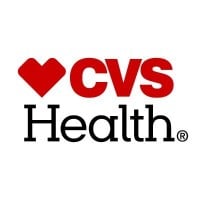
CVS Health
CVS Health is the leading health solutions company, delivering care like no one else can. We reach more people and improve the health of communities across America through our local presence, digital channels and over 300,000 dedicated colleagues – including more than 40,000 physicians, pharmacists,

Owens & Minor
Owens & Minor, Inc. (NYSE: OMI) is a Fortune 500 global healthcare solutions company providing essential products and services that support care from the hospital to the home. For over 100 years, Owens & Minor and its affiliated brands, Apria® , Byram®, and HALYARD*, have helped to make each day be

Brookdale
Relationships are the heart of our culture. They help us create a sense of family among our residents, associates and patients. Integrity is our soul. It guides us to be open in our communication with each other, and it enables us to make the right decisions for the people who have entrusted us with
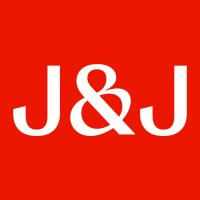
Johnson & Johnson
At Johnson & Johnson, we believe health is everything. As a focused healthcare company, with expertise in Innovative Medicine and MedTech, we’re empowered to tackle the world’s toughest health challenges, innovate through science and technology, and transform patient care. All of this is possibl
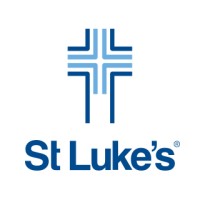
St. Luke's Health System
As the only Idaho-based, not-for-profit health system, St. Luke’s Health System is dedicated to our mission “To improve the health of people in the communities we serve.” Today that means not only treating you when you’re sick or hurt, but doing everything we can to help you be as healthy as possibl
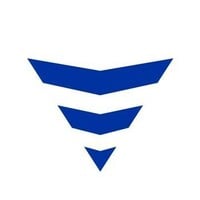
Fresenius Medical Care North America
Fresenius Medical Care North America (FMCNA) is the premier healthcare company focused on providing the highest quality care to people with renal and other chronic conditions. Through its industry-leading network of dialysis facilities and outpatient cardiac and vascular labs, Fresenius Medical Care

Frequently Asked Questions (FAQ) on Cybersecurity Incidents
LCMHS CyberSecurity History Information
Total Incidents: According to Rankiteo, LCMHS has faced 2 incidents in the past.
Incident Types: The types of cybersecurity incidents that have occurred include ['Breach', 'Ransomware'].
Total Financial Loss: The total financial loss from these incidents is estimated to be {total_financial_loss}.
Cybersecurity Posture: The company's overall cybersecurity posture is described as Lake Charles Memorial Health System is southwest Louisiana's largest not-for-profit, community healthcare system. Memorial Health System is locally owned and operated by a Board of Trustees from the community it serves. With personalized care for every stage of life, Lake Charles Memorial Health System makes receiving excellent healthcare close to home a reality. Nestled on I-10, two hours from Houston and three hours from New Orleans, Lake Charles Memorial opened its doors in 1952 as a small 100-bed facility. Today, one hospital has grown into a full-service, comprehensive health system spanning a five-parish area across southwest Louisiana. With a 417-bed capacity over three campuses, a 40-bed Level III Trauma Center, and over 300 physician specialists on its medical staff, Lake Charles Memorial responds to the most immediate and primary medical needs of all people in southwest Louisiana. As a cornerstone of the community, Memorial is the second largest employer in the region, offering a place on our team for over 2,500 employees to provide for their families and reach their career goals. Recognized as a 2023 Great Community Hospital by Becker’s Healthcare and by Care Chex as a 2022 Top 10% in the Nation for Heart Attack Treatment, Memorial’s commitment to quality and investment in the latest medical technology, are a few reasons patients and employees choose Memorial as their healthcare home..
Detection and Response: The company detects and responds to cybersecurity incidents through {description_of_detection_and_response_process}.
Incident Details
Incident 1: Ransomware Attack
Title: {Incident_Title}
Description: {Brief_description_of_the_incident}
Date Detected: {Detection_Date}
Date Publicly Disclosed: {Disclosure_Date}
Date Resolved: {Resolution_Date}
Type: {Type_of_Attack}
Attack Vector: {Attack_Vector}
Vulnerability Exploited: {Vulnerability}
Threat Actor: {Threat_Actor}
Motivation: {Motivation}
Incident 2: Data Breach
Title: {Incident_Title}
Description: {Brief_description_of_the_incident}
Date Detected: {Detection_Date}
Date Publicly Disclosed: {Disclosure_Date}
Date Resolved: {Resolution_Date}
Type: {Type_of_Attack}
Attack Vector: {Attack_Vector}
Vulnerability Exploited: {Vulnerability}
Threat Actor: {Threat_Actor}
Motivation: {Motivation}
Common Attack Types: As of now, the company has not encountered any reported incidents involving common cyberattacks.
Identification of Attack Vectors: The company identifies the attack vectors used in incidents through {description_of_identification_process}.
Impact of the Incidents
Incident 1: Ransomware Attack
Financial Loss: {Financial_Loss}
Data Compromised: {Data_Compromised}
Systems Affected: {Systems_Affected}
Downtime: {Downtime}
Operational Impact: {Operational_Impact}
Conversion Rate Impact: {Conversion_Rate_Impact}
Revenue Loss: {Revenue_Loss}
Customer Complaints: {Customer_Complaints}
Brand Reputation Impact: {Brand_Reputation_Impact}
Legal Liabilities: {Legal_Liabilities}
Identity Theft Risk: {Identity_Theft_Risk}
Payment Information Risk: {Payment_Information_Risk}
Incident 2: Data Breach
Financial Loss: {Financial_Loss}
Data Compromised: {Data_Compromised}
Systems Affected: {Systems_Affected}
Downtime: {Downtime}
Operational Impact: {Operational_Impact}
Conversion Rate Impact: {Conversion_Rate_Impact}
Revenue Loss: {Revenue_Loss}
Customer Complaints: {Customer_Complaints}
Brand Reputation Impact: {Brand_Reputation_Impact}
Legal Liabilities: {Legal_Liabilities}
Identity Theft Risk: {Identity_Theft_Risk}
Payment Information Risk: {Payment_Information_Risk}
Average Financial Loss: The average financial loss per incident is {average_financial_loss}.
Commonly Compromised Data Types: The types of data most commonly compromised in incidents are {list_of_commonly_compromised_data_types}.
Incident 1: Ransomware Attack
Entity Name: {Entity_Name}
Entity Type: {Entity_Type}
Industry: {Industry}
Location: {Location}
Size: {Size}
Customers Affected: {Customers_Affected}
Incident 2: Data Breach
Entity Name: {Entity_Name}
Entity Type: {Entity_Type}
Industry: {Industry}
Location: {Location}
Size: {Size}
Customers Affected: {Customers_Affected}
Response to the Incidents
Incident 1: Ransomware Attack
Incident Response Plan Activated: {Yes/No}
Third Party Assistance: {Yes/No}
Law Enforcement Notified: {Yes/No}
Containment Measures: {Containment_Measures}
Remediation Measures: {Remediation_Measures}
Recovery Measures: {Recovery_Measures}
Communication Strategy: {Communication_Strategy}
Adaptive Behavioral WAF: {Adaptive_Behavioral_WAF}
On-Demand Scrubbing Services: {On_Demand_Scrubbing_Services}
Network Segmentation: {Network_Segmentation}
Enhanced Monitoring: {Enhanced_Monitoring}
Incident 2: Data Breach
Incident Response Plan Activated: {Yes/No}
Third Party Assistance: {Yes/No}
Law Enforcement Notified: {Yes/No}
Containment Measures: {Containment_Measures}
Remediation Measures: {Remediation_Measures}
Recovery Measures: {Recovery_Measures}
Communication Strategy: {Communication_Strategy}
Adaptive Behavioral WAF: {Adaptive_Behavioral_WAF}
On-Demand Scrubbing Services: {On_Demand_Scrubbing_Services}
Network Segmentation: {Network_Segmentation}
Enhanced Monitoring: {Enhanced_Monitoring}
Incident Response Plan: The company's incident response plan is described as {description_of_incident_response_plan}.
Third-Party Assistance: The company involves third-party assistance in incident response through {description_of_third_party_involvement}.
Data Breach Information
Incident 2: Data Breach
Type of Data Compromised: {Type_of_Data}
Number of Records Exposed: {Number_of_Records}
Sensitivity of Data: {Sensitivity_of_Data}
Data Exfiltration: {Yes/No}
Data Encryption: {Yes/No}
File Types Exposed: {File_Types}
Personally Identifiable Information: {Yes/No}
Prevention of Data Exfiltration: The company takes the following measures to prevent data exfiltration: {description_of_prevention_measures}.
Handling of PII Incidents: The company handles incidents involving personally identifiable information (PII) through {description_of_handling_process}.
Ransomware Information
Incident 1: Ransomware Attack
Ransom Demanded: {Ransom_Amount}
Ransom Paid: {Ransom_Paid}
Ransomware Strain: {Ransomware_Strain}
Data Encryption: {Yes/No}
Data Exfiltration: {Yes/No}
Ransom Payment Policy: The company's policy on paying ransoms in ransomware incidents is described as {description_of_ransom_payment_policy}.
Data Recovery from Ransomware: The company recovers data encrypted by ransomware through {description_of_data_recovery_process}.
Regulatory Compliance
Incident 1: Ransomware Attack
Regulations Violated: {Regulations_Violated}
Fines Imposed: {Fines_Imposed}
Legal Actions: {Legal_Actions}
Regulatory Notifications: {Regulatory_Notifications}
Incident 2: Data Breach
Regulations Violated: {Regulations_Violated}
Fines Imposed: {Fines_Imposed}
Legal Actions: {Legal_Actions}
Regulatory Notifications: {Regulatory_Notifications}
Regulatory Frameworks: The company complies with the following regulatory frameworks regarding cybersecurity: {list_of_regulatory_frameworks}.
Ensuring Regulatory Compliance: The company ensures compliance with regulatory requirements through {description_of_compliance_measures}.
Lessons Learned and Recommendations
Incident 1: Ransomware Attack
Lessons Learned: {Lessons_Learned}
Incident 2: Data Breach
Lessons Learned: {Lessons_Learned}
Incident 1: Ransomware Attack
Recommendations: {Recommendations}
Incident 2: Data Breach
Recommendations: {Recommendations}
Key Lessons Learned: The key lessons learned from past incidents are {list_of_key_lessons_learned}.
Implemented Recommendations: The company has implemented the following recommendations to improve cybersecurity: {list_of_implemented_recommendations}.
References
Additional Resources: Stakeholders can find additional resources on cybersecurity best practices at {list_of_additional_resources}.
Investigation Status
Incident 1: Ransomware Attack
Investigation Status: {Investigation_Status}
Incident 2: Data Breach
Investigation Status: {Investigation_Status}
Communication of Investigation Status: The company communicates the status of incident investigations to stakeholders through {description_of_communication_process}.
Stakeholder and Customer Advisories
Incident 1: Ransomware Attack
Stakeholder Advisories: {Stakeholder_Advisories}
Customer Advisories: {Customer_Advisories}
Incident 2: Data Breach
Stakeholder Advisories: {Stakeholder_Advisories}
Customer Advisories: {Customer_Advisories}
Advisories Provided: The company provides the following advisories to stakeholders and customers following an incident: {description_of_advisories_provided}.
Initial Access Broker
Incident 1: Ransomware Attack
Entry Point: {Entry_Point}
Reconnaissance Period: {Reconnaissance_Period}
Backdoors Established: {Backdoors_Established}
High Value Targets: {High_Value_Targets}
Data Sold on Dark Web: {Yes/No}
Incident 2: Data Breach
Entry Point: {Entry_Point}
Reconnaissance Period: {Reconnaissance_Period}
Backdoors Established: {Backdoors_Established}
High Value Targets: {High_Value_Targets}
Data Sold on Dark Web: {Yes/No}
Monitoring and Mitigation of Initial Access Brokers: The company monitors and mitigates the activities of initial access brokers through {description_of_monitoring_and_mitigation_measures}.
Post-Incident Analysis
Incident 1: Ransomware Attack
Root Causes: {Root_Causes}
Corrective Actions: {Corrective_Actions}
Incident 2: Data Breach
Root Causes: {Root_Causes}
Corrective Actions: {Corrective_Actions}
Post-Incident Analysis Process: The company's process for conducting post-incident analysis is described as {description_of_post_incident_analysis_process}.
Corrective Actions Taken: The company has taken the following corrective actions based on post-incident analysis: {list_of_corrective_actions_taken}.
Additional Questions
General Information
Ransom Payment History: The company has {paid/not_paid} ransoms in the past.
Last Ransom Demanded: The amount of the last ransom demanded was {last_ransom_amount}.
Last Attacking Group: The attacking group in the last incident was {last_attacking_group}.
Incident Details
Most Recent Incident Detected: The most recent incident detected was on {most_recent_incident_detected_date}.
Most Recent Incident Publicly Disclosed: The most recent incident publicly disclosed was on {most_recent_incident_publicly_disclosed_date}.
Most Recent Incident Resolved: The most recent incident resolved was on {most_recent_incident_resolved_date}.
Impact of the Incidents
Highest Financial Loss: The highest financial loss from an incident was {highest_financial_loss}.
Most Significant Data Compromised: The most significant data compromised in an incident was {most_significant_data_compromised}.
Most Significant System Affected: The most significant system affected in an incident was {most_significant_system_affected}.
Response to the Incidents
Third-Party Assistance in Most Recent Incident: The third-party assistance involved in the most recent incident was {third_party_assistance_in_most_recent_incident}.
Containment Measures in Most Recent Incident: The containment measures taken in the most recent incident were {containment_measures_in_most_recent_incident}.
Data Breach Information
Most Sensitive Data Compromised: The most sensitive data compromised in a breach was {most_sensitive_data_compromised}.
Number of Records Exposed: The number of records exposed in the most significant breach was {number_of_records_exposed}.
Ransomware Information
Highest Ransom Demanded: The highest ransom demanded in a ransomware incident was {highest_ransom_demanded}.
Highest Ransom Paid: The highest ransom paid in a ransomware incident was {highest_ransom_paid}.
Regulatory Compliance
Highest Fine Imposed: The highest fine imposed for a regulatory violation was {highest_fine_imposed}.
Most Significant Legal Action: The most significant legal action taken for a regulatory violation was {most_significant_legal_action}.
Lessons Learned and Recommendations
Most Significant Lesson Learned: The most significant lesson learned from past incidents was {most_significant_lesson_learned}.
Most Significant Recommendation Implemented: The most significant recommendation implemented to improve cybersecurity was {most_significant_recommendation_implemented}.
References
Most Recent Source: The most recent source of information about an incident is {most_recent_source}.
Most Recent URL for Additional Resources: The most recent URL for additional resources on cybersecurity best practices is {most_recent_url}.
Investigation Status
Current Status of Most Recent Investigation: The current status of the most recent investigation is {current_status_of_most_recent_investigation}.
Stakeholder and Customer Advisories
Most Recent Stakeholder Advisory: The most recent stakeholder advisory issued was {most_recent_stakeholder_advisory}.
Most Recent Customer Advisory: The most recent customer advisory issued was {most_recent_customer_advisory}.
Initial Access Broker
Most Recent Entry Point: The most recent entry point used by an initial access broker was {most_recent_entry_point}.
Most Recent Reconnaissance Period: The most recent reconnaissance period for an incident was {most_recent_reconnaissance_period}.
Post-Incident Analysis
Most Significant Root Cause: The most significant root cause identified in post-incident analysis was {most_significant_root_cause}.
Most Significant Corrective Action: The most significant corrective action taken based on post-incident analysis was {most_significant_corrective_action}.
What Do We Measure?
















Every week, Rankiteo analyzes billions of signals to give organizations a sharper, faster view of emerging risks. With deeper, more actionable intelligence at their fingertips, security teams can outpace threat actors, respond instantly to Zero-Day attacks, and dramatically shrink their risk exposure window.
These are some of the factors we use to calculate the overall score:
Identify exposed access points, detect misconfigured SSL certificates, and uncover vulnerabilities across the network infrastructure.
Gain visibility into the software components used within an organization to detect vulnerabilities, manage risk, and ensure supply chain security.
Monitor and manage all IT assets and their configurations to ensure accurate, real-time visibility across the company's technology environment.
Leverage real-time insights on active threats, malware campaigns, and emerging vulnerabilities to proactively defend against evolving cyberattacks.




